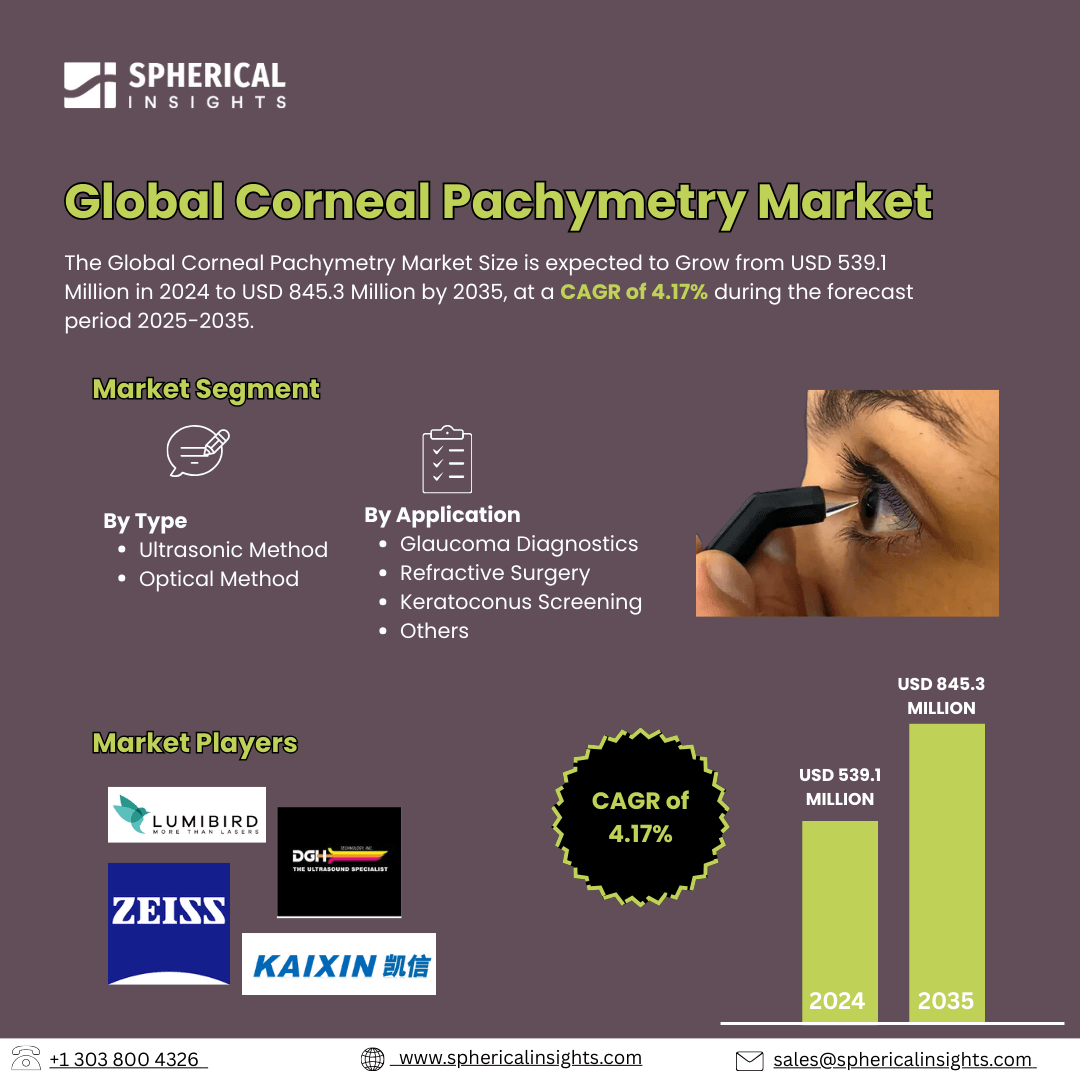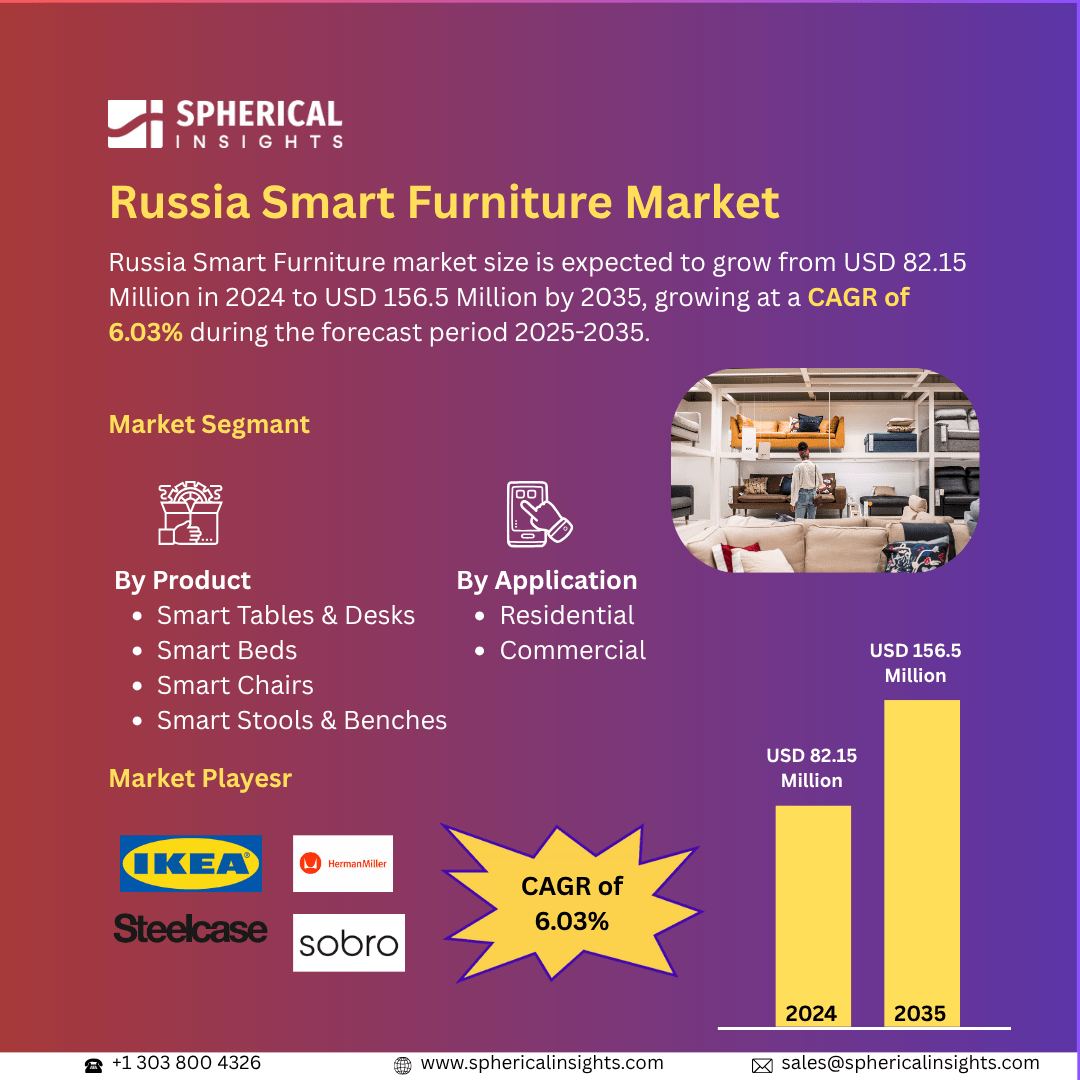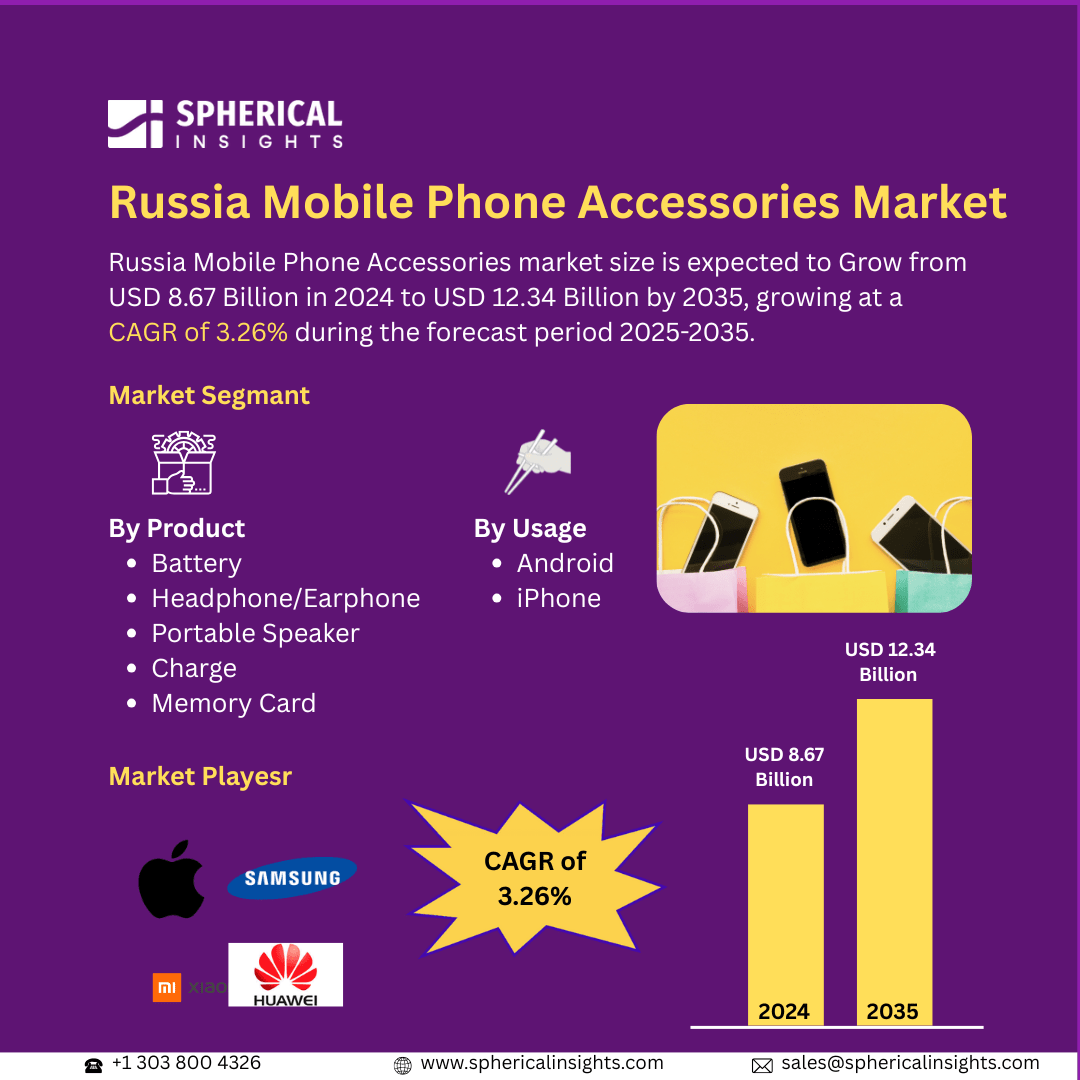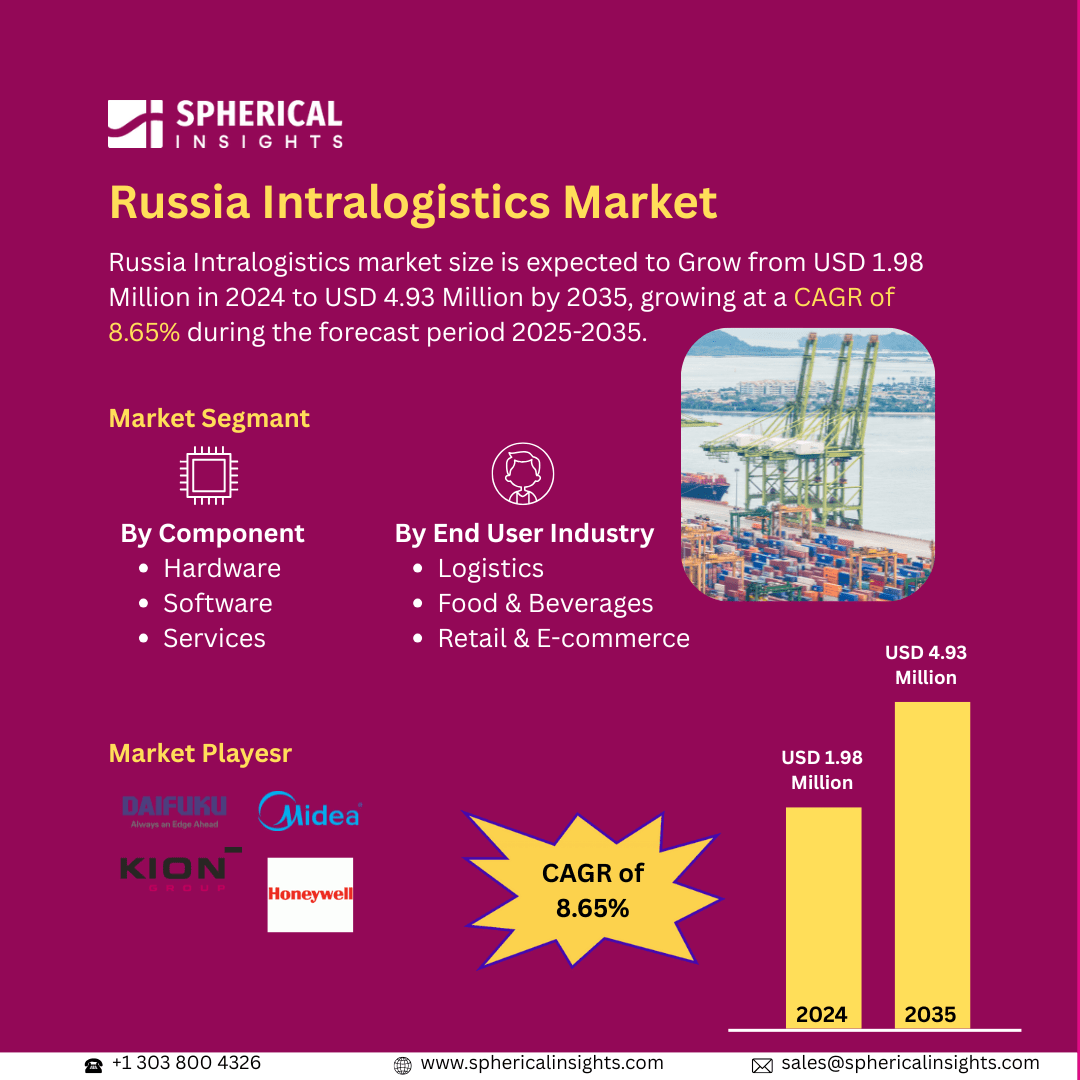Global Corneal Pachymetry Market Insights Forecasts to 2035
- The Global Corneal Pachymetry Market Size Was Estimated at USD 539.1 Million in 2024
- The Market Size is Expected to Grow at a CAGR of around 4.17% from 2025 to 2035
- The Worldwide Corneal Pachymetry Market Size is Expected to Reach USD 845.3 Million by 2035
- Asia Pacific is expected to grow the fastest during the forecast period.
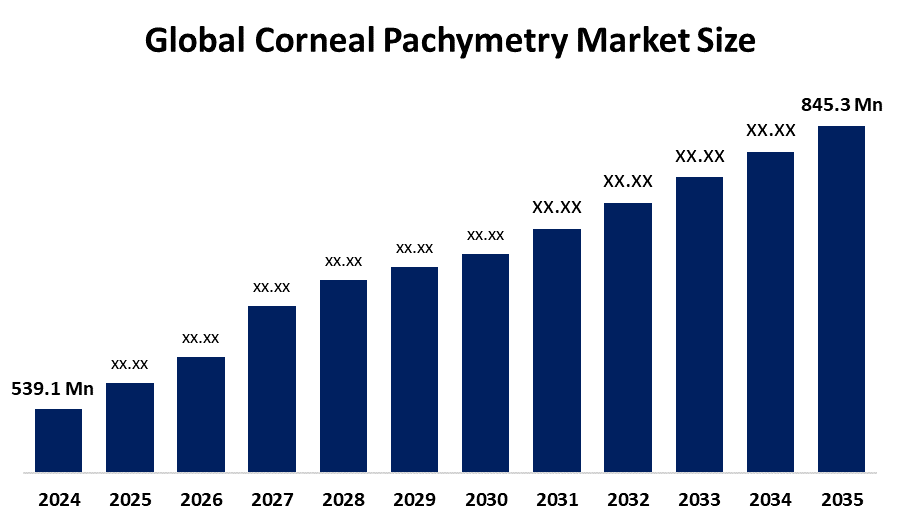
Corneal Pachymetry Market
Corneal Pachymetry is a clinical eye process used to measure the thickness of the cornea. Usually, Ultrasound is used using psychometric or optical devices such as Shehimphalug camera and optical coherence tomography (OCT). Accurate corneal thickness measurement is necessary in determining eligibility for refractive surgery in diagnosis and management of corneal edema, diagnosis and management. This plays an important role in intraocular pressure (IOP) improvement and helps ophthalmologists to make informed treatment decisions. Increasing prevalence of eye disorders, raising awareness about preventive eye care, and progress in non-contact optical Pachymetry technologies are contributing to the development of the market.
Attractive Opportunities in the Corneal Pachymetry Market
- Demand is inspired by the increasing use of non-contact optical psychometric, which provides faster, more accurate reading, better patient comfort, and a lower risk of infection than traditional ultrasound devices.
- The tendency to include Pachymetry in multipurpose ophthalmic platforms increases, which allows eye care providers to evaluate corneal thicknesses in addition to other diagnoses in the same device, increase productivity, increase productivity and cut patient waiting time.
- The visual infrastructure expands new markets for manufacturers by expanding access to rising versions of increasing investment, cataract and refractory surgery, and government-led eye health initiatives.
Global Corneal Pachymetry Market Dynamics
DRIVER: Growing Prevalence of Glaucoma and Refractive Surgeries
One of the main factors propelling the market's expansion is the rising incidence of glaucoma worldwide, which necessitates an exact measurement of corneal thickness in order to accurately quantify intraocular pressure. Additionally, the need for sophisticated pachymeters in ophthalmic clinics and surgical centres is being fuelled by the growing popularity of refractive operations like LASIK and PRK, where pachymetry is a crucial preoperative step.
RESTRAINT: High Cost of Advanced Devices
The cost of advanced optical psychomotor can be a major barrier, especially for small ophthalmic practices and clinics in low and moderate-income countries. Non-contact models, while offering rapid and more comfortable testing, often require adequate initial investment and ongoing maintenance expenses, making them less accessible to resource-limited healthcare providers. In areas without strong reimbursement systems, patients may also have to bear the cost of testing, reducing the adoption rates. This economic challenge limits the spread of the latest technology, forcing many features to rely on the old ultrasound technology that provides low accuracy and poor patient comfort.
OPPORTUNITY: Advancements in Non-Contact and Portable Technologies
Technical innovation is opening new avenues for market development, especially through portable, non-contact devices through digestive development. These devices offer patient comfort by eliminating direct contact with the cornea, while AI-assisted image analysis is improving clinical accuracy. Portable system, with some battery power and wireless connectivity, are making Pachymetry more accessible in remote or underserved areas. Integration with electronic medical records (EMRs) and multicultural clinical platforms is further enhancing the appeal of these solutions. These innovations align well with mobile clinics, tele-photonics initiatives, and large-scale screening programs, making the manufacturers opportunities to tap into new customer segments.
CHALLENGES: Lack of Skilled Ophthalmic Technicians
Lack of trained ophthalmic technicians capable of operating psychological devices and accurately interpreting the results is a hindrance to market growth, especially in developing countries. The accuracy of corneal thickness measurements can be compromised if the equipment is not used correctly, making decisions of potentially incorrect diagnoses or sub-treatment. Many small healthcare facilities lack employees who are adequately trained on advanced optical psychrophiles, resulting in reduced use of the equipment even when available. To address this skill interval, professional training programs require more investment, partnership with ophthalmology schools, and a more comfortable, user-friendly system design that can reduce dependence on specialized operators.
Global Corneal Pachymetry Market Ecosystem Analysis
Market ecosystems include device manufacturer, component suppliers, regulatory bodies, distribution networks, healthcare providers, and final users. Topcon Corporation, NIDEK CO., Ltd., Carl Zeiss MEDITEC AG, Reichert Technologies, TOMEY CORPORATION, and major manufacturers such as Opteva Inc. develop both ultrasound and optical psychometers. U.S. Regulatory bodies, such as the FDA and European CE, ensure safety and performance standards. The distribution chain includes both direct sales to hospitals and eye centers and indirect sales through authorized distributors.
Based on the type, the optical method segment led the market with the leading revenue share over the forecast period
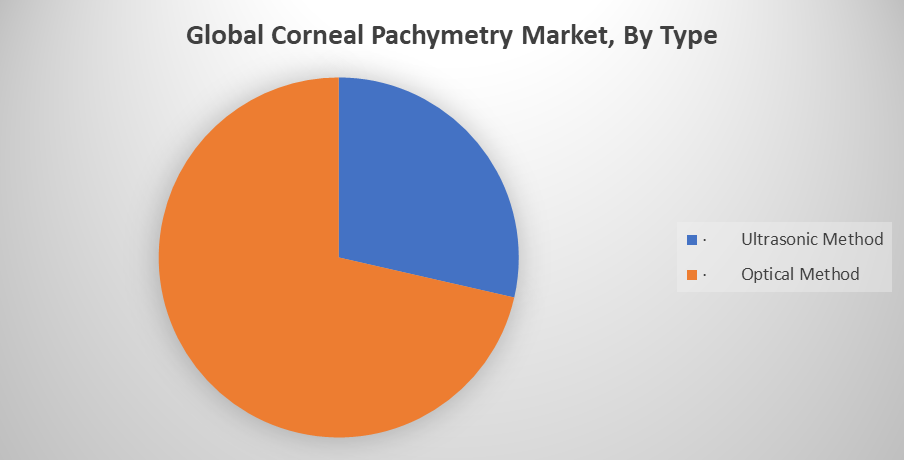
The segment dominance is driven by due to its non-contact character, which, in contrast to the ultrasonic method, greatly improves patient comfort, lowers the risk of infection, and yields faster and more precise results. In order to increase workflow efficiency in hectic ophthalmology clinics, optical pachymeters are being included more and more into multifunctional ocular diagnostic platforms. This integration enables combined imaging and corneal thickness assessment.
Based on the application, the glaucoma diagnostics segment led the market with the major revenue share during the forecast period
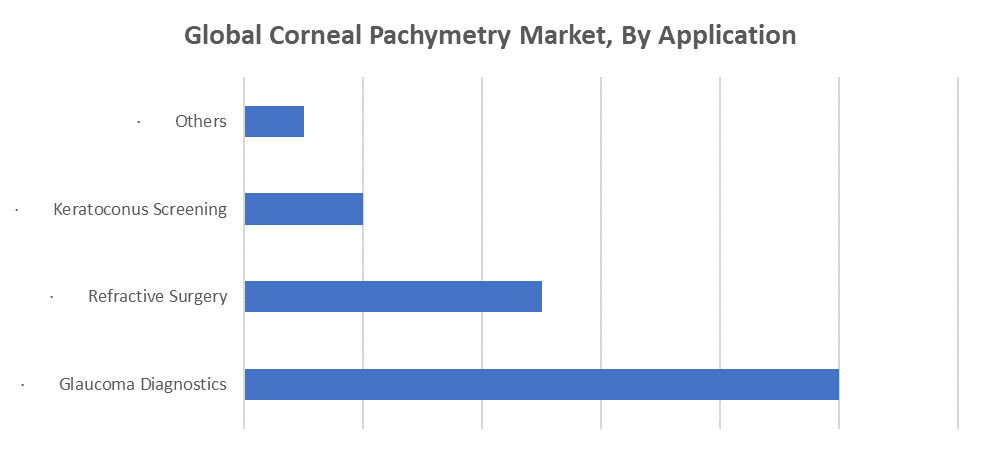
The glaucoma diagnostics segment led the market, holding the largest revenue share during the forecast period. Pachymetry is a standard test in glaucoma screening and treatment because it provides a precise measurement of corneal thickness, which is necessary for intraocular pressure adjustment in glaucoma patients. Since glaucoma is one of the main causes of permanent blindness in the globe, there is a constant need for pachymetry in glaucoma diagnoses. Adoption in hospitals and specialty eye clinics is also being accelerated by greater awareness and screening initiatives.
North America is anticipated to hold the largest market share of the corneal pachymetry market during the forecast period
North America is anticipated to hold the largest market share in the corneal pachymetry market during the forecast period. Supported by a strong presence of top manufacturers like Topcon, Nidek, and Carl Zeiss Meditech, a high adoption rate of cutting-edge ophthalmic products, and a modern healthcare infrastructure. In addition, the region's favourable reimbursement policies and high prevalence of glaucoma and refractive operations have increased demand for pachymetry equipment in both inpatient and outpatient settings.
Asia Pacific is expected to grow at the fastest CAGR in the corneal pachymetry market during the forecast period
Asia Pacific is expected to grow at the fastest CAGR in the corneal pachymetry market during the forecast period. The growing prevalence of eye conditions, a rise in cataract and refractive surgery procedures, and government-sponsored eye health initiatives in nations like China, Japan, and India. More clinics and hospitals in the area are implementing sophisticated pachymetry equipment as a result of the quick advancements in healthcare infrastructure and the increased awareness of the need of preventive eye care. The market is growing faster as a result of growing middle-class populations who have easier access to vision correction procedures.
Recent Development
- In January 2024, Carl Zeiss Meditech AG agreed to acquire 100% of the shares in Dutch Ophthalmic Research Center (International) B.V. (D.O.R.C.). This acquisition is expected to enhance and complement ZEISS Medical Technology's ophthalmic portfolio, strengthening ZEISS's position in the ophthalmic medical devices market.
- In April 2023, NIDEK launched the NT-1/1e non-contact tonometer, which is designed to provide non-contact tonometry for measuring intraocular pressure. This launch improved the company’s product portfolio and improved its reputation in the market.
Key Market Players
KEY PLAYERS IN THE CORNEAL PACHYMETRY MARKET INCLUDE
- Carl Zeiss Meditech AG
- DGH Technology, Inc
- Kxele.com
- Lumibird
- NIDEK CO., LTD.
- Reichert Inc.
- Sonomed Escalon
- TOMEY CORPORATION
- Topcon Corporation
- Visionix
- Others
Market Segment
This study forecasts revenue at global, regional, and country levels from 2020 to 2035. Spherical Insights has segmented the corneal pachymetry market based on the below-mentioned segments:
Global Corneal Pachymetry Market, By Type
- Ultrasonic Method
- Optical Method
Global Corneal Pachymetry Market, By Application
- Glaucoma Diagnostics
- Refractive Surgery
- Keratoconus Screening
- Others
Global Corneal Pachymetry Market, By Regional Analysis
- North America
- Europe
- Germany
- UK
- France
- Italy
- Spain
- Russia
- Rest of Europe
- Asia Pacific
- China
- Japan
- India
- South Korea
- Australia
- Rest of Asia Pacific
- South America
- Brazil
- Argentina
- Rest of South America
- Middle East & Africa
- UAE
- Saudi Arabia
- Qatar
- South Africa
- Rest of the Middle East & Africa
